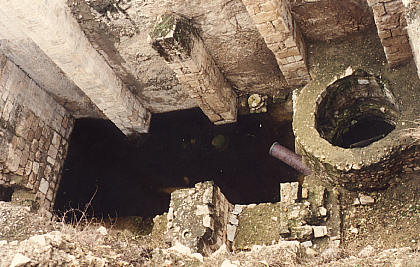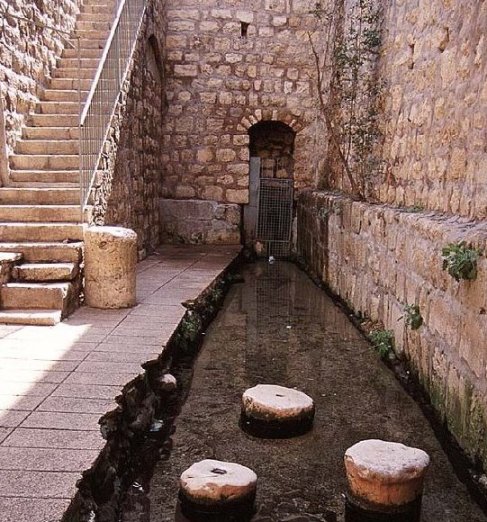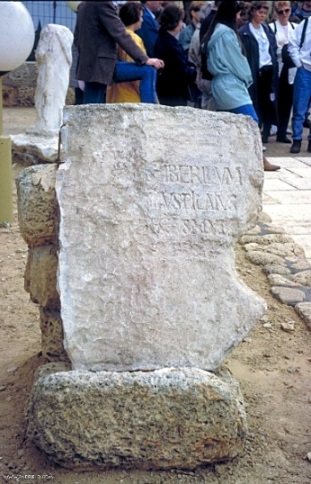|
Proving the Existence of JesusLuke Luke was a physician and historian who wrote the book of Luke, as well as the book of Acts which make up about ¼ of the New Testament. But how accurate was Luke? Can we believe everything he wrote? Lee Strobel interviewed John McRay PH.D. on this subject. John McRay is author of the book Archaeology and the New Testament. McRay studied at Hebrew University, the Ecole Biblique et Archeologique Francaise in Jerusalem, Vanderbilt University Divinity School, and the University of Chicago. His articles also appear in seventeen encyclopedias and dictionaries. Here’s what McRay said about Luke: “The general consensus of both liberal and conservative scholars is that Luke is very accurate as a historian, McRay replied. He’s erudite, he’s eloquent, his Greek approaches classical quality, he writes as an educated man, and archaeological discoveries are showing over and over again that Luke is accurate in what he has to say.” (Strobel, 129) So McRay and many other scholars today believe that Luke is not only a reliable historian, but his words were accurate and precise like that of a highly educated man. McRay goes on to give several examples of Luke’s writing: “In Luke 3:1 he refers to Lysanias being the tetrach of Abilene in about A.D. 27. For years scholars pointed to this evidence that Luke didn’t know what he was talking about, since everybody knew that Lysanias was not a tetrach but rather the ruler of Chalcis half a century earlier. If Luke can’t get that basic fact right, they suggested, nothing he has written can be trusted. That’s when archeology stepped it. An inscription was later found from the time of Tiberius, from A.D. 14 to 37, which names Lysanias as tetrarch in Abila near Damascus – just as Luke had written.” (Strobel, 130) From this example, we can see that Luke had his facts straight. Lysanias was the tetrach of Abilene at the time, which was proven by archeological findings. Here is another example: “Yes, but in his gospel Luke says that Jesus was walking into Jericho when he healed the blind man Bartimaeus, while Mark says he was coming out of Jericho. Isn’t this a clear-cut contradiction that casts on the reliability of the New Testament? […] Jericho was in at least four different locations as much as a quarter of a mile apart in ancient times. […] The point is, you can be coming out of one site where Jericho existed and be going into another one, […] What you’re saying is that both Luke and Mark could be right? I asked. That’s correct.” (Strobel, 131) In this example, what seems like a contradiction of Luke’s writing is actually a misunderstanding of the terrain. When we read Jericho, we assume that it is one location with definite borders, but that is not the case. John Scholars challenge the gospel of John because it was written long after Jesus. However, McRay talks about how recent archeological findings have proven that John is quite accurate. “For example, John 5:1-15 records how Jesus healed an invalid by the Pool of Bethesda. John provides the detail that the pool had five porticoes. For a long time people cites this as an example of John being inaccurate, because no such place had been found. But more recently the Pool of Bethesda has been excavated – it lies maybe forty feet below ground – and sure enough, there were five porticoes, which means colonnaded porches or walkways, exactly as John had described. And you have other discoveries – the Pool of Siloam from John 9:7, Jacob’s Well from John 4:12, the probable location of the Stone Pavement near the Jaffa Gate where Jesus appeared before Pilate in John 19:13, even Pilate’s own identity – all of which have lent historical credibility to the John’s gospel.” (Strobel 132-33)
The Pool of Bethesda (shown above) – John 5:1-15
The Pool of Siloam (shown above) – John 9:7
Pontius Pilate (shown above) – proof he existed The amount of archeological findings that match the New Testament is astounding. Many recent findings prove that what John said can be taken as fact. There are a lot more examples that I won’t talk about here, but you can read them in The Case for Christ. This is the complete opposite for the Book of Mormon: “In other words, no Book of Mormon cities have ever been located, no Book of Mormon person, place, nation, or name has ever been found, no Book of Mormon artifacts, no Book of Mormon scriptures, no Book of Mormon inscriptions…nothing which demonstrates the Book of Mormon is anything other than myth or invention has ever been found.” – John Ankerberg and John Weldon, The Facts on the Mormon Church (Eugene, Ore.: Harvest House, 1991), 30 emphasis in original. Page 2 of 5 |
Subscribe to Bible Truth Newsletter:







